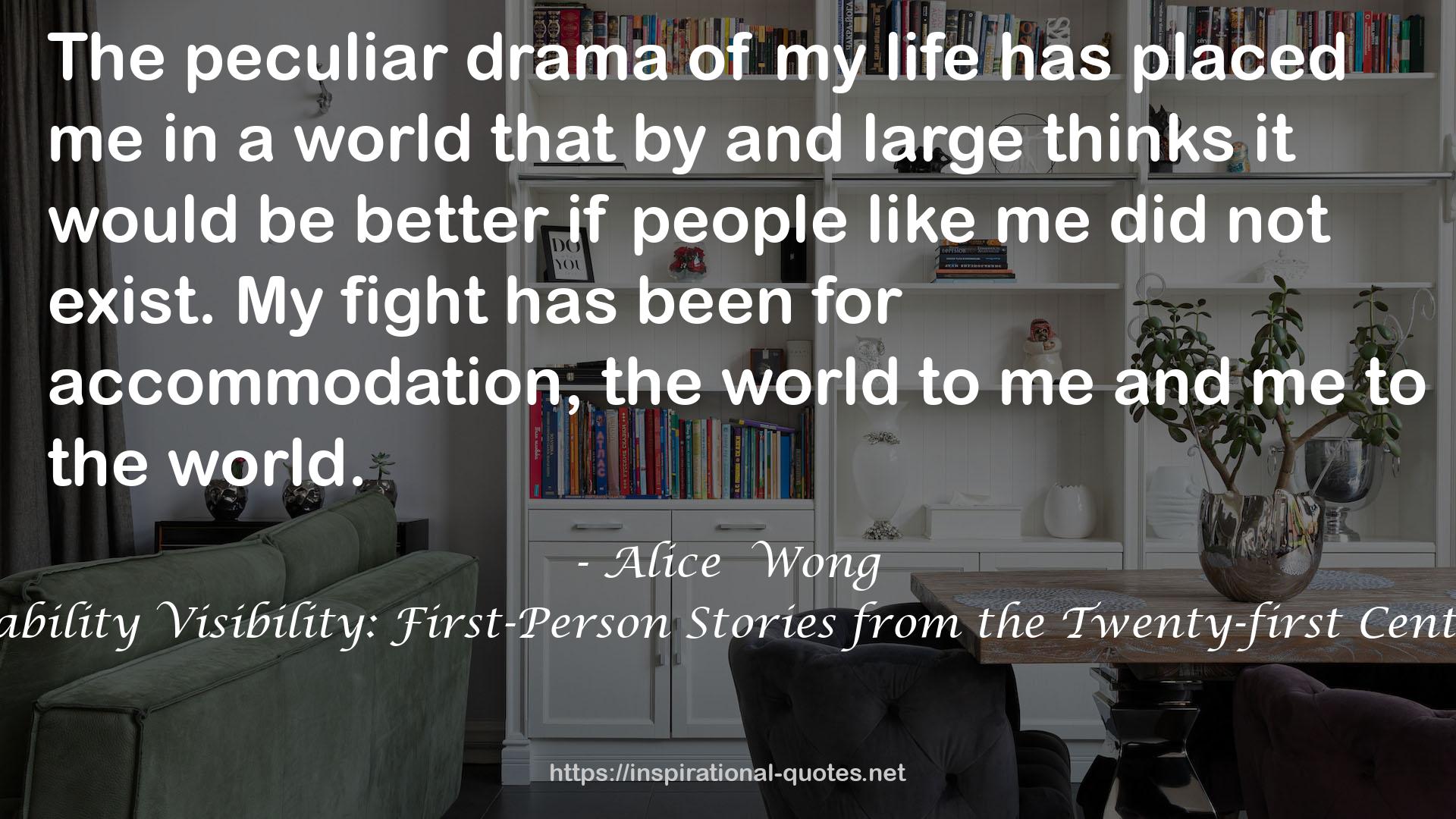4
" People ask me, “Have you tried yoga? Kombucha? This special water?” And I don’t have the energy to explain that yes, I’ve tried them. I’ve tried crystals and healing drum circles and prayer and everything. What I want to try is acceptance. I want to see what happens if I can simply accept myself for who I am: battered, broken, hoping for relief, still enduring somehow. I will still take a cure if it’s presented to me, but I am so tired of trying to bargain with the universe for some kind of cure. The price is simply too high to live chasing cures, because in doing so, I’m missing living my life. I know only that in chasing to achieve the person I once was, I will miss the person I have become. "
― Alice Wong , Disability Visibility: First-Person Stories from the Twenty-first Century
6
" Disabled people have always existed, whether the word disability is used or not. To me, disability is not a monolith, nor is it a clear-cut binary of disabled and nondisabled. Disability is mutable and ever-evolving. Disability is both apparent and nonapparent. Disability is pain, struggle, brilliance, abundance, and joy. Disability is sociopolitical, cultural, and biological. Being visible and claiming a disabled identity brings risks as much as it brings pride. "
― Alice Wong , Disability Visibility: First-Person Stories from the Twenty-first Century
7
" Esmé Weijun Wang writes in The Collected Schizophrenias about speaking to medical professionals about her experiences with schizophrenia. A doctor approached her to thank her afterward, but what she said shows how many able-bodied people don’t treat or see disabled people as human: She said that she was grateful for this reminder that her patients are human too. She starts out with such hope, she said, every time a new patient comes—and then they relapse and return, relapse and return. The clients, or patients, exhibit their illness in ways that prevent them from seeming like people who can dream, or like people who can have others dream for them. Disabled voices like Wang’s and others are needed to change the narratives around disability—to insist on disabled people’s humanity and complexity, to resist inspiration porn, to challenge the binary that says disabled bodies and lives are less important or tragic or that they have value only if they can be fixed or be cured or be made productive. "
― Alice Wong , Disability Visibility: First-Person Stories from the Twenty-first Century
10
" Any movement that seeks to end police violence has no choice but to work to undo the racism and ableism and audism which, together, make Black Disabled/Deaf people prime targets for police violence. For instance, Darnell T. Wicker, a Black deaf veteran, was killed by police officers in Louisville, Kentucky, on August 8, 2016 (note that the lowercase d indicates that Darnell Wicker was deaf, not culturally Deaf). Body camera footage shows officers shooting Darnell Wicker multiple times within one to two seconds of issuing verbal orders on a dark night. However, Darnell Wicker relied on speech-reading to communicate. "
― Alice Wong , Disability Visibility: First-Person Stories from the Twenty-first Century

